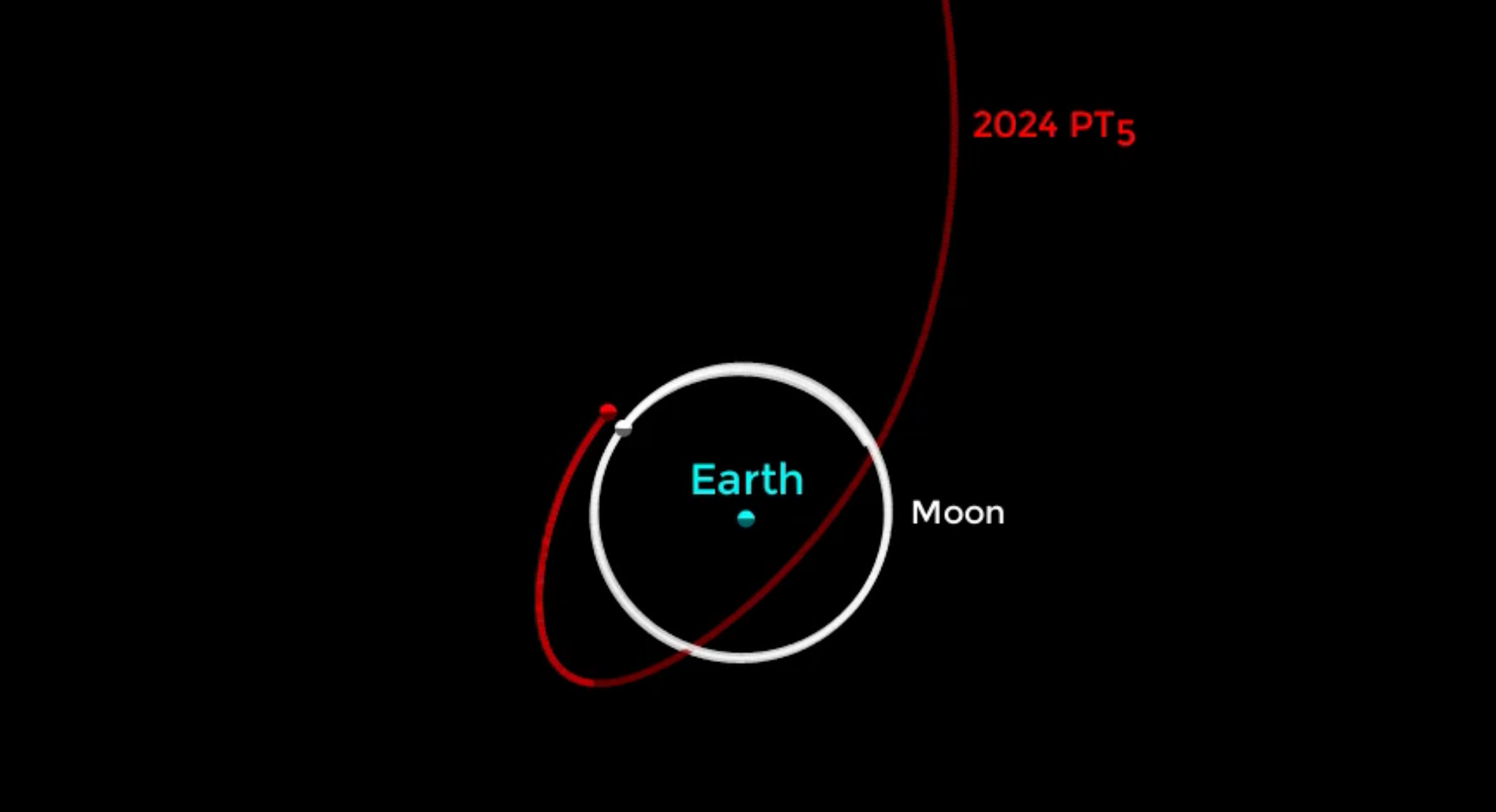It’s just a little guy, and not everyone agrees that it’s actually a mini-moon.
When approaching Earth, asteroids tend to do one of two things: Most of the time, they miss. Sometimes, they hit, leaving a bright streak in our planet’s sky or a gruesome new wound in its crust. But very rarely, asteroids are captured by Earth’s gravity and pirouette around the planet, becoming, in effect, a moon — albeit an ephemeral one.
A space rock spotted recently with NASA-funded ground telescopes is about to do just that, temporarily becoming an additional lunar-like companion to planet Earth.
The asteroid 2024 PT5, reported this month in the Research Notes of the American Astronomical Society, is just 33 feet long. Astronomers calculate that from Sept. 29 to Nov. 25, it will loop around the planet before breaking free of its gravitational tether and flying off into space.
“It is pretty cool,” said Federica Spoto, an asteroid dynamics researcher at the Center for Astrophysics, Harvard & Smithsonian, who was not involved with the study. She added that observations of 2024 PT5 will bolster scientists’ knowledge of the sort of space rocks that flit about close to Earth — including those that occasionally crash into it.
Asteroids that fail to escape Earth’s gravity and end up orbiting the planet for a time are referred to as mini-moons. Being so diminutive and speedy, they are difficult to spot and formally identify. Sometimes, they turn out to be artificial objects: the European Space Agency’s star-mapping Gaia spacecraft was once mistaken for an asteroid. Leftover parts of rockets have also taken on such alter egos.
“Every time an object with an orbit so earthlike is discovered, there is a chance that we are just recovering space debris,” said Raúl de la Fuente Marcos, an astronomer at the Complutense University of Madrid and a co-author of the study. But, he said, observations of 2024 PT5 indicate that “it is a natural object, no doubt about that.”
